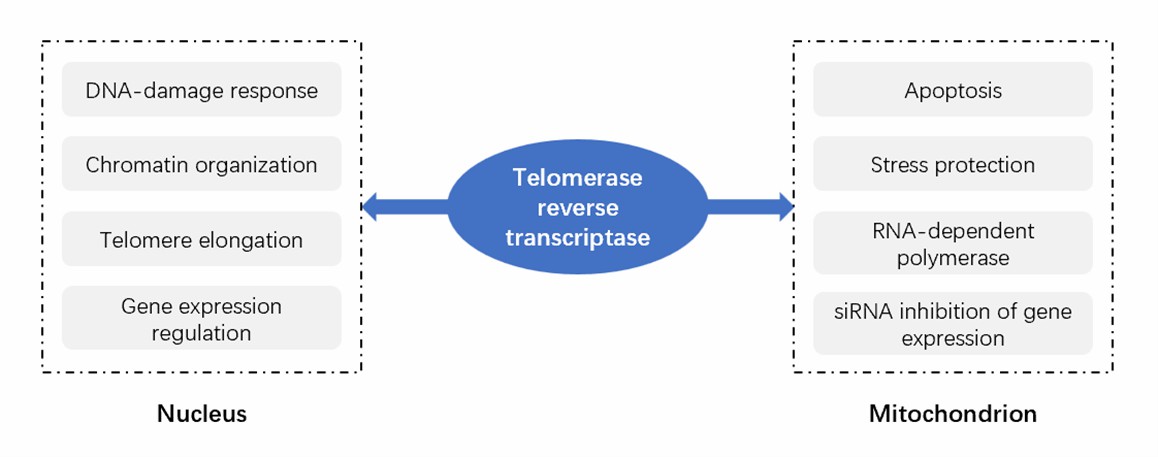Telomerase is a ribonucleoprotein reverse transcriptase synthesizing G-rich strands in the telomeric DNA sequence. The telomerase complex consists of six subunits, including TR (telomerase RNA), TEP1 (telomerase-associated protein 1), TERT (telomerase reverse transcriptase), SP90 (heat shock protein 90), P23, and dyskerin. Telomerase extends telomeres by de-pairing and binding the G-rich telomere region of the cell to the telomerase RNA template, synthesizing a new sequence in response to the polymerization of telomerase, and extending the telomere.
 Fig. 1 Brief diagram of telomerase functions.
Fig. 1 Brief diagram of telomerase functions.
The molecular mechanisms underlying the regulation of telomerase activity are incompletely understood and are generally recognized to be a complex process with multiple steps and levels. At Lifeasible, our team of highly skilled and knowledgeable scientists has made remarkable contributions to understanding plant telomerase regulation.
We provide analysis services for plant reverse transcriptase (TERT), which possesses a reverse transcriptase domain that facilitates the synthesis of telomeric DNA and telomerase activity. TERT interacts with various proteins involved in telomerase regulation, such as telomeric DNA-binding proteins. These interactions modulate the recruitment and localization of telomerase to telomeres, thereby influencing telomerase activity.
We help our customers study the intricate network of cell cycle proteins regulating plant telomerase. Telomerase activity varies depending on the cell cycle stage, with complete inhibition of the enzyme during G0, a gradual increase in G1/S telomerase activity, the highest activity during the S phase, and a gradual decrease in G2/M telomerase activity.
We offer analysis service of the regulatory role of phosphorylated and dephosphorylated proteins, post-translational modifications, that play a vital role in regulating protein function. For instance, it has been demonstrated that phosphorylation of telomerase-associated protein 1 (TPP1) regulates its binding to telomeres and enhances telomerase recruitment.
Through our state-of-the-art facilities and innovative approaches, Lifeasible has successfully elucidated the intricate regulatory mechanisms governing plant telomerase. If you are interested in our services or have some questions, please feel free to contact us or make an online inquiry.
Lifeasible has established a one-stop service platform for plants. In addition to obtaining customized solutions for plant genetic engineering, customers can also conduct follow-up analysis and research on plants through our analysis platform. The analytical services we provide include but are not limited to the following:
Why Do Plants Blush When They Are Hungry?
April 26, 2024
STU-CRISPR System Improves Plant Genome Editing Efficiency
April 19, 2024